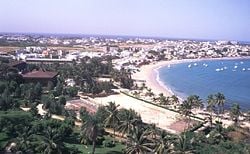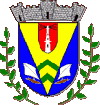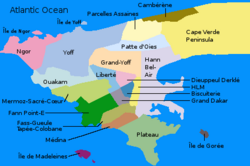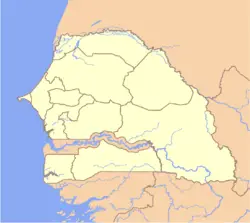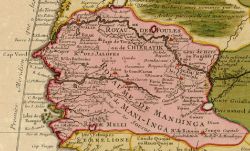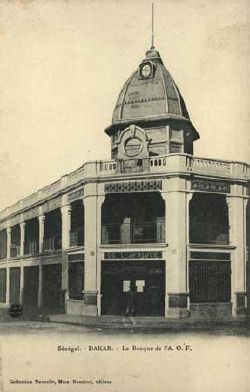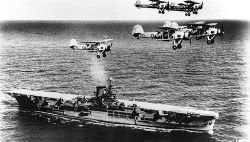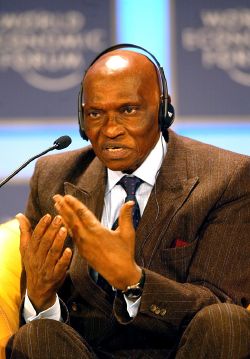Difference between revisions of "Dakar" - New World Encyclopedia
Mike Butler (talk | contribs) |
Mike Butler (talk | contribs) |
||
| Line 170: | Line 170: | ||
Cheikh Anta Diop University, also known as the University of Dakar, which was established in 1957, has an enrollment of over 60,000 students. | Cheikh Anta Diop University, also known as the University of Dakar, which was established in 1957, has an enrollment of over 60,000 students. | ||
| + | |||
| + | Notable people born in Dakar include: R&B singer [[Akon]], French politician [[Ségolène Royal]], singer and percussionist [[Youssou N'Dour]], soccer players [[Patrick Vieira]] (Inter Milan), [[Patrice Evra]] (Manchester United) and [[Macoumba Kandji]] (Atlanta Silverbacks) as well as basketball players [[DeSagana Diop]] (Dallas Mavericks), [[Boris Diaw]] (Phoenix Suns) and [[Cheikh Samb]] (Detroit Pistons). | ||
==Dakar rally== | ==Dakar rally== | ||
| Line 176: | Line 178: | ||
Dakar is the finishing point of the [[Dakar Rally]] and is a member of the [[Organization of World Heritage Cities]]. | Dakar is the finishing point of the [[Dakar Rally]] and is a member of the [[Organization of World Heritage Cities]]. | ||
| − | |||
| − | |||
| − | |||
| − | |||
| − | |||
| − | |||
| − | |||
| − | |||
| − | |||
| − | |||
| − | |||
| − | |||
==Notes== | ==Notes== | ||
Revision as of 02:03, 12 September 2008
| Ville de Dakar (City of Dakar) | |||
| N'gor—a northern suburb of Dakar, near the Yoff Airport | |||
|
|||
| City of Dakar, divided into 19 communes d'arrondissement | |||
| Location within Senegal, Africa | |||
| Coordinates: {{#invoke:Coordinates|coord}}{{#coordinates:14|41|34|N|17|26|48|W|type:city | |||
|---|---|---|---|
| name= }} | |||
| Country | |||
| Région | Dakar | ||
| Département | Dakar | ||
| Settled | 15th century | ||
| Communes d'arrondissement | 19
|
||
| Government | |||
| - Mayor | Pape Diop (since 2002) (PDS) | ||
| - Regional president | Abdoulaye Wade (since 2002) | ||
| Area [1] | |||
| - City | 82.38 km² (31.8 sq mi) | ||
| - Metro | 547 km² (211.2 sq mi) | ||
| Population (December 31, 2005 estimate)[2] | |||
| - City | 1,030,594 | ||
| - Density | 12,510/km² (32,400.8/sq mi) | ||
| - Metro | 2,452,656 | ||
| - Metro Density | 4,484/km² (11,613.5/sq mi) | ||
| Data here are for the administrative Dakar région, which matches almost exactly the limits of the metropolitan area | |||
| Time zone | GMT (UTC+0) | ||
| Website: http://www.dakarville.sn | |||
Dakar, the capital and largest city of Senegal, is located on the Cape Verde Peninsula, at Africa's most western point. It is a departure point for trans-Atlantic and European trade, which has helped its growth into a regional port. Dakar is an administrative centre, is home to the National Assembly of Senegal, and the Senegal Presidential Palace. Attractions include the Dakar Grand Mosque, built in 1964, Gorée Island, which is famous as a destination for people interested in the Atlantic slave trade, the IFAN Museum of West African culture, clifftop walks and beaches, and Hann Park, home to the Senegal Zoo.
Geography
The name Dakar derives from dakhar, which is a Wolof name for the tamarind tree, and the name of a coastal Lebu village located south of where the first pier was built.
Located midway between the Gambia and Sénégal rivers, on the south-east of the Cape Verde Peninsula, Dakar is the westernmost African city.
Dakar has a tropical climate, but the characteristic heat and humidity are moderated in the city by cool breezes. The average maximum daytime temperature in January of 79°F (26°C), dropping to an average maximum of around 88°F (31°C) in July. The rainy season, between June and November, brings heavy downpours along with strong southeasterly winds. The dry season, from December to May, is exacerbated by the hot, dry harmattan winds. Mean annual precipitation is 21 inches (542mm).
The commune d'arrondissement of Dakar-Plateau, on the southern part of the peninsula, is the historical heart of the city, and most public buildings, hospitals, and embassies are located there. Adjacent, to the west, is the most densly populated arrondissement of Médina. The business district is located to the north. The port, the fishing harbour, and peanut-export facilities are located to the north and east. The industrial estate of Hann is further north.
History
The Cape Verde Peninsula was settled, no later than the 15th century, by the Lebou, an ethnic group related to the neighboring Wolof and Sereer. The original villages: Ouakam, Ngor, Yoff and Hann, still constitute distinct Lebou neighborhoods of the city.
In 1444, the Portuguese arrived on the island of Gorée and founded a settlement there. By 1536, they had begun using it as a base for the export of slaves. The mainland of Cap-Vert, however, was under control of the Jolof Empire, as part of the western province of Cayor which seceded from Jolof in its own right in 1549.
A new Lebou village, called Ndakarou, was established directly across from Gorée in the 17th century to service the European trading factory with food and drinking water. Gorée was captured by the United Netherlands in 1588, which gave it its present name (spelled Goeree, after Goeree-Overflakkee in Holland).
The island was to switch hands between the Portuguese and Dutch several more times before falling to the English under Admiral Robert Holmes (1622-1692) on January 23, 1664, and finally to the French in 1677. Though under continuous French administration since, Métis families, descendant from Dutch and French traders and African wives, dominated the slave trade. The infamous "House of Slaves", said to be the final exit point of the slaves from Africa, was built there in 1776.
In 1795, the Lebou of Cape Verde revolted against Cayor rule. A new theocratic state, subsequently called the "Lebou Republic" by the French, was established under the leadership of the Diop, a Muslim clerical family originally from Koki in Cayor. The capital of the republic was established at Ndakarou.
In 1857, the French established a military post at Ndakarou (which they called "Dakar") and annexed the Lebou Republic, though its institutions continued to function nominally. The Serigne (also spelled Sëriñ, "Lord") of Ndakarou is still recognized as the traditional political authority of the Lebou by the Senegalese State today.
The slave trade was abolished by France in February 1794. However, Napoleon reinstated it in May 1802, then finally abolished it permanently in March 1815. Despite Napoleon's abolition, a clandestine slave trade continued at Gorée until 1848, when it was abolished throughout all French territories.
To replace trade in slaves, the French promoted peanut cultivation on the mainland. As the peanut trade boomed, tiny Gorée Island, whose population had grown to 6000 residents, proved ineffectual as a port. Traders from Gorée decided to move to the continent and a "factory" with warehouses was established in Rufisque in 1840.
Large public expenditure for infrastructure was allocated by the colonial authorities to Dakar's development. The port facilities were improved with jetties, a telegraph line was established along the coast to Saint-Louis and the Dakar-Saint Louis railway was completed in 1885, at which point the city became an important base for the conquest of the western Sudan.
Gorée, including Dakar, was recognised as a French commune in 1872. Dakar itself was split off from Gorée as a separate commune in 1887. The citizens of the city elected their own mayor and municipal council and helped send an elected representative to the National Assembly in Paris. Dakar replaced Saint-Louis as the capital of French West Africa in 1902. A second major railroad, the Dakar-Niger built from 1906–1923, linked Dakar to Bamako and consolidated the city's position at the head of France's West African empire. In 1929, the commune of Gorée Island, now with only a few hundred inhabitants, was merged into Dakar.
Following a plague epidemic in 1914, the authorities forced most of the African population out of old neighborhoods, or "Plateau", and into a new quarter, called Médina, separated from it by a "sanitary cordon". As first occupants of the land, the Lebou inhabitants of the city successfully resisted this expropriation. They were supported by Blaise Diagne, the first African to be elected Deputy to the National Assembly.
Nonetheless, the Plateau thereafter became an administrative, commercial, and residential district increasingly reserved for Europeans and served as model for similar exclusionary administrative enclaves in French Africa's other colonial capitals (Bamako, Conakry, Abidjan, Brazzaville). Meanwhile, the Layene Sufi order, established by Seydina Mouhammadou Limamou Laye, was thriving among the Lebou in Yoff and in a new village called Cambérène.
In its colonial heyday Dakar was one of the major cities of the French Empire, comparable to Hanoi or Beirut. French trading firms established branch offices there and industrial investments (mills, breweries, refineries, canneries) were attracted by its port and railway center. It was also strategically important to France, which maintained an important naval base and coaling station in its harbor and which integrated it into its earliest air force and airmail circuits, most notably with the legendary, but no longer existent, Mermoz airfield.
By the 1930s, Dakar had become West Africa's main port for shipping peanuts.
During the Battle of Dakar, which took place off the coast of Dakar on September 23, 1940, – September 25, 1940, the British navy attempted to rally the colonial administration in Dakar to the Allied cause and detach it from Vichy. In November 1944, West African conscripts of the French army mutinied against poor conditions at the Thiaroye camp, on the outskirts of the city. The mutiny was seen as an indictment of the colonial system and constituted a watershed for the nationalist movement.
Dakar was the capital of the short-lived Mali Federation from January 1959, which became fully independent on June 20, 1960. The federation broke up on August 20, 1960, and Dakar became the capital of Senegal. Léopold Senghor (1906-2001), an internationally known poet, politician, and statesman, was elected Senegal's first president in August 1960.
Senegal joined with The Gambia to form the nominal confederation of Senegambia on February 1, 1982. However, the envisaged integration of the two countries was never carried out, and the union was dissolved in 1989.
The commune of Dakar, whose population approached 1 million inhabitants, was deemed too large and too populated to be properly managed by a central municipality, and thus on August 30, 1996, Dakar was divided into 19 communes d'arrondissement. These communes d'arrondissement were given extensive powers, and are very much like regular communes. The 19 communes d'arrondissement belong to either of the four arrondissements of Dakar, and the sous-préfet of each arrondissement is in charge of controlling the activities of the communes d'arrondissement in his arrondissement.
Following the political transition of 2000 when Abdoulaye Wade (b.1926), leader of the opposition (Senegalese Democratic Party), defeated President Abdou Diouf (Socialist Party of Senegal), local elections were held in 2002. In local body elections on May 12, 2002, Pape Diop was elected mayor of Dakar, defeating the long time Socialist mayor Mamadou Diop, while Abdoulaye Wade was elected president of the regional council of the Dakar région, defeating the Socialists who hitherto controlled the région.
France maintains an air force base at Yoff and the French fleet is serviced in Dakar's port.
Government
Senegal is a republic in which the president, who is chief of state, is elected by popular vote for a five-year term, and is eligible for a second term. The prime minister, who is head of government, is appointed by the president.
The bicameral parliament consisting of the National Assembly of 150 seats, with 90 members elected by direct popular vote with the remaining members elected by proportional representation from party lists to serve five-year terms, and the Senate, comprising 100 seats, of which 35 are indirectly elected, and the remaining 65 members appointed by the president.
The city of Dakar is both a commune, one of the 67 communes of Senegal, and a département, a local administrative structure of the central state, one of the 34 départements of Senegal.
The département of Dakar is one of the four départements of the Dakar région, which is one of the 11 régions of Senegal. The Dakar région encompasses the city of Dakar, the region's capital, and all its suburbs along the Cape Verde Peninsula — roughly the metropolitan area of Dakar.
The département of Dakar is divided into four arrondissements: Almadies, Grand Dakar, Parcelles Assainies (Dakar's most populated arrondissement), and Plateau/Gorée (downtown Dakar).
The commune of Dakar is ruled by a democratically elected municipal council (conseil municipal) serving five years, and a mayor elected by the municipal council.
Economy
Dakar is a regional industrial, service centre, and financial center. The city is home to a dozen national and regional banks (including the BCEAO which manages the unified West African CFA currency), and to numerous international organizations, NGOs and international research centers. Manufacturing industries include refining petroleum and peanut-oil, canning fish, milling flour, brewing, and assembling trucks. Senegal's per capita GDP was estimated at $1700 in 2007.
Buses and minibuses operate on the main routes linking Dakar to other cities and towns in Senegal. The most common form of transportation is the car rapide - colourfully painted vehicles that are crowded and sometimes unsafe. Taxis are available.
Dakar is the terminus of the Dakar-Niger railroad line. Dakar port is sheltered between two jetties, has a draft of 50 feet (15 meters) at the harbour entrance, and has a container berth with one mobile container crane. Léopold Sédar Senghor International Airport, located to the north of the city, is a stopping point for flights between Europe and South America. It was a Space Shuttle landing site until it was determined that a dip in the runway could damage the shuttle upon landing. In 2007, the airport served about 2,100,000 passengers.
Demographics
According to December 31, 2005 official estimates, the city of Dakar proper has a population of 1,030,594, whereas the population of the Dakar metropolitan area is estimated at 2.45 million people.[2] Since independence, urbanization has sprawled eastward past Pikine, a commuter suburb whose population (2001 est. 1,200,000) is greater than that of Dakar proper, to Rufisque, creating a conurbation of almost 3 million (over a quarter of the national population).
Dakar has a large Lebanese community (concentrated in the import-export sector) that dates to the 1920s, a community of Moroccan business people, as well as Mauritanian, Cape Verdian and Guinean communities. The city is home to as many as 20,000 French expatriates. Otherwise, Wolof make up 43.3 percent of the population, Pular 23.8 percent, Serer 14.7 percent, Jola 3.7 percent, Mandinka 3 percent, Soninke 1.1 percent, European and Lebanese 1 percent, other 9.4 percent.
French is the official language, while Wolof, Pulaar, Jola, and Mandinka are also spoken. Muslims account for 94 percent of the population, Christian 5 percent (mostly Roman Catholic), indigenous beliefs 1 percent.
Cheikh Anta Diop University, also known as the University of Dakar, which was established in 1957, has an enrollment of over 60,000 students.
Notable people born in Dakar include: R&B singer Akon, French politician Ségolène Royal, singer and percussionist Youssou N'Dour, soccer players Patrick Vieira (Inter Milan), Patrice Evra (Manchester United) and Macoumba Kandji (Atlanta Silverbacks) as well as basketball players DeSagana Diop (Dallas Mavericks), Boris Diaw (Phoenix Suns) and Cheikh Samb (Detroit Pistons).
Dakar rally
Dakar is the finishing point of the Dakar Rally and is a member of the Organization of World Heritage Cities.
Notes
- ↑ (French)Tableau de répartition de la surface totale occupée. Retrieved 2007-03-08.
- ↑ 2.0 2.1 (French) Agence Nationale de la Statistique et de la Démographie, Government of Senegal. "Situation économique et sociale du Sénégal", édition 2005, page 163 (PDF). Retrieved 2007-03-08.
Further reading
- Dakar. 2007. Gardners Books. OCLC 227178150
- "Senegal Look after democracy". 2007. ECONOMIST -LONDON- ECONOMIST NEWSPAPER LIMITED-. (8517): 56. OCLC 205447041
- Gellar, Sheldon. 2005. Democracy in Senegal: Tocquevillian analytics in Africa. Political evolution and institutional change. New York: Palgrave Macmillan. ISBN 9781403970275
- Gellar, Sheldon. 1982. Senegal—an African nation between Islam and the West. Profiles. Boulder, Colo: Westview Press. ISBN 9780566005510
- Lutz, William. 1988. Senegal. Places and peoples of the world. New York: Chelsea House Publishers. ISBN 9781555461928
External links
- Encyclopaedia Britannica Dakar Retrieved September 10, 2008.
- World Fact Book 2008 Senegal Retrieved September 10, 2008.
-
- Mapping from Multimap or GlobalGuide or Google Maps
- Satellite image from WikiMapia
- Mapping from OpenStreetMap
- Photos of Dakar Senegal Fotopaises.com, Retrieved September 11, 2008.
- Photos Dakar Senegal Flickr.com, Retrieved September 11, 2008.
Credits
New World Encyclopedia writers and editors rewrote and completed the Wikipedia article in accordance with New World Encyclopedia standards. This article abides by terms of the Creative Commons CC-by-sa 3.0 License (CC-by-sa), which may be used and disseminated with proper attribution. Credit is due under the terms of this license that can reference both the New World Encyclopedia contributors and the selfless volunteer contributors of the Wikimedia Foundation. To cite this article click here for a list of acceptable citing formats.The history of earlier contributions by wikipedians is accessible to researchers here:
The history of this article since it was imported to New World Encyclopedia:
Note: Some restrictions may apply to use of individual images which are separately licensed.
